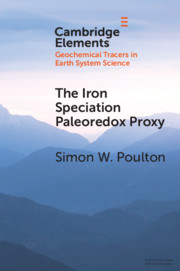Element contents
The Iron Speciation Paleoredox Proxy
Published online by Cambridge University Press: 02 February 2021
Summary
- Type
- Element
- Information
- Online ISBN: 9781108847148Publisher: Cambridge University PressPrint publication: 04 March 2021
References
- 25
- Cited by



